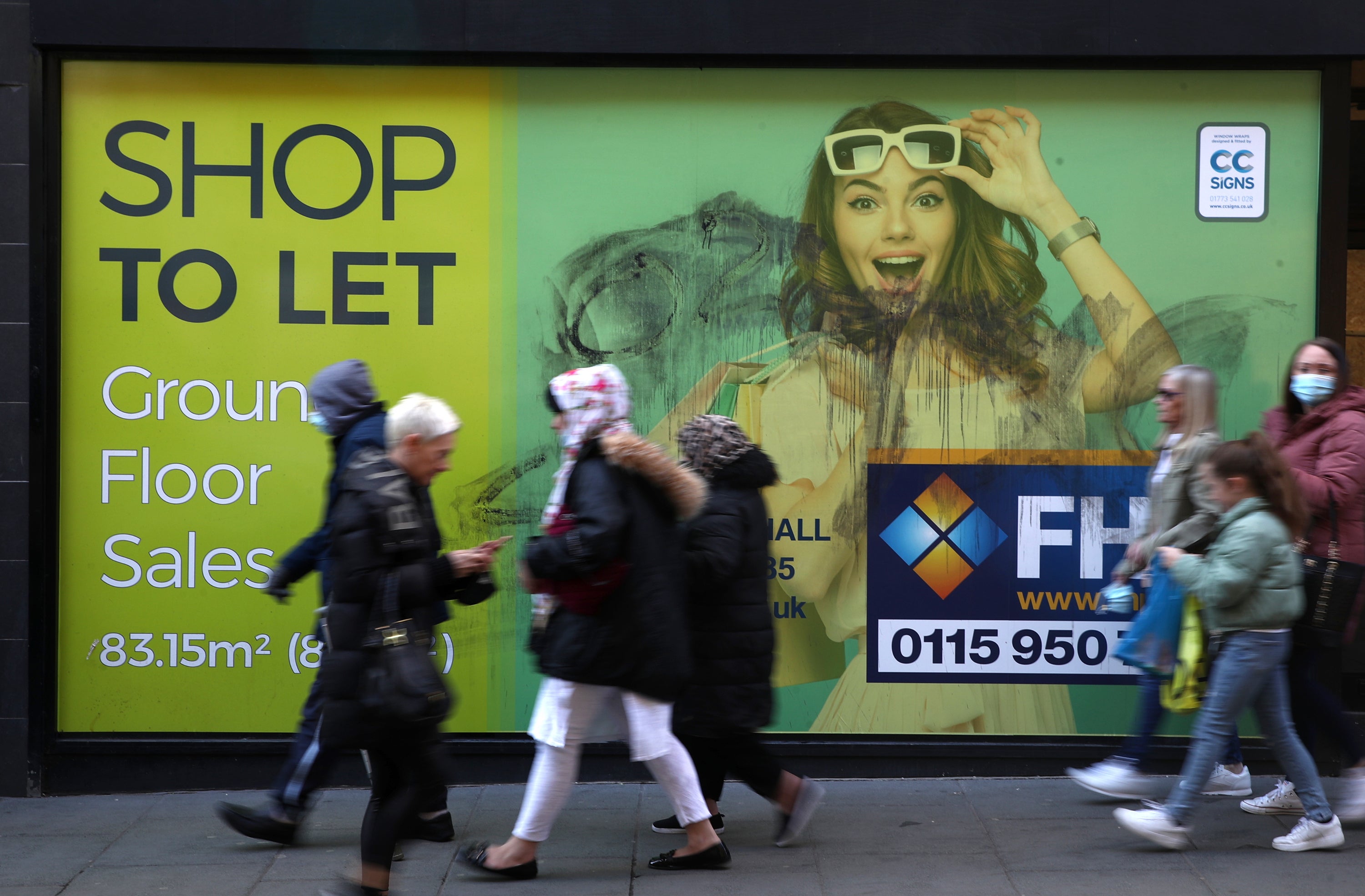Number of empty shops continues to rise across UK after Covid hit
The British Retail Consortium and Local Data Company found that fashion retailers had been hardest hit.

Your support helps us to tell the story
From reproductive rights to climate change to Big Tech, The Independent is on the ground when the story is developing. Whether it's investigating the financials of Elon Musk's pro-Trump PAC or producing our latest documentary, 'The A Word', which shines a light on the American women fighting for reproductive rights, we know how important it is to parse out the facts from the messaging.
At such a critical moment in US history, we need reporters on the ground. Your donation allows us to keep sending journalists to speak to both sides of the story.
The Independent is trusted by Americans across the entire political spectrum. And unlike many other quality news outlets, we choose not to lock Americans out of our reporting and analysis with paywalls. We believe quality journalism should be available to everyone, paid for by those who can afford it.
Your support makes all the difference.The number of empty shops in high streets, retail parks and shopping centres has increased in the past three months, according to new data.
The British Retail Consortium (BRC) and Local Data Company (LDC) found that fashion retailers had been hardest hit with the continued surge in online business in the sector and the closure of high street institutions including Debenhams and Topshop.
Shopping centres were the hardest hit, with nearly one in five units sitting empty – a 19.4% vacancy rate – followed by high streets with a vacancy rate of 14.5% and retail parks at 11.5% in the second quarter of the year compared with the first three months of 2021.
Overall vacancy rates were 14.5% in Britain, up from 14.1% in the first quarter of the year – meaning the number of empty shops has increased for the past three years.
Helen Dickinson chief executive of the BRC, said: “It comes as no surprise that the number of shuttered stores in the UK continues to rise, after retailers have been in and out of lockdown for over a year.
“While vacancy rates are rising across all retail locations, it is shopping centres, with a high proportion of fashion retailers, that have been the hardest hit by the pandemic.
“Almost one in five shopping centre units now lie empty, and more than one in eight units have been empty for more than a year.
“Retail parks have also been impacted from the loss of anchor stores and their vacancy rate is rising quickly.”
She pointed out that there is a sharp north-south divide with the south of England, including London, with lower vacancy rates compared with the north of the country, where disposable income is lower.
The boss of the BRC, which represents retailers across the UK, added: “The vacancy rate could rise further now the Covid-19 business rates holiday has come to an end.
“The Government must ensure the ongoing business rates review leads to reform of this broken system, delivering on its commitment to permanently reduce the cost burden to sustainable levels.”